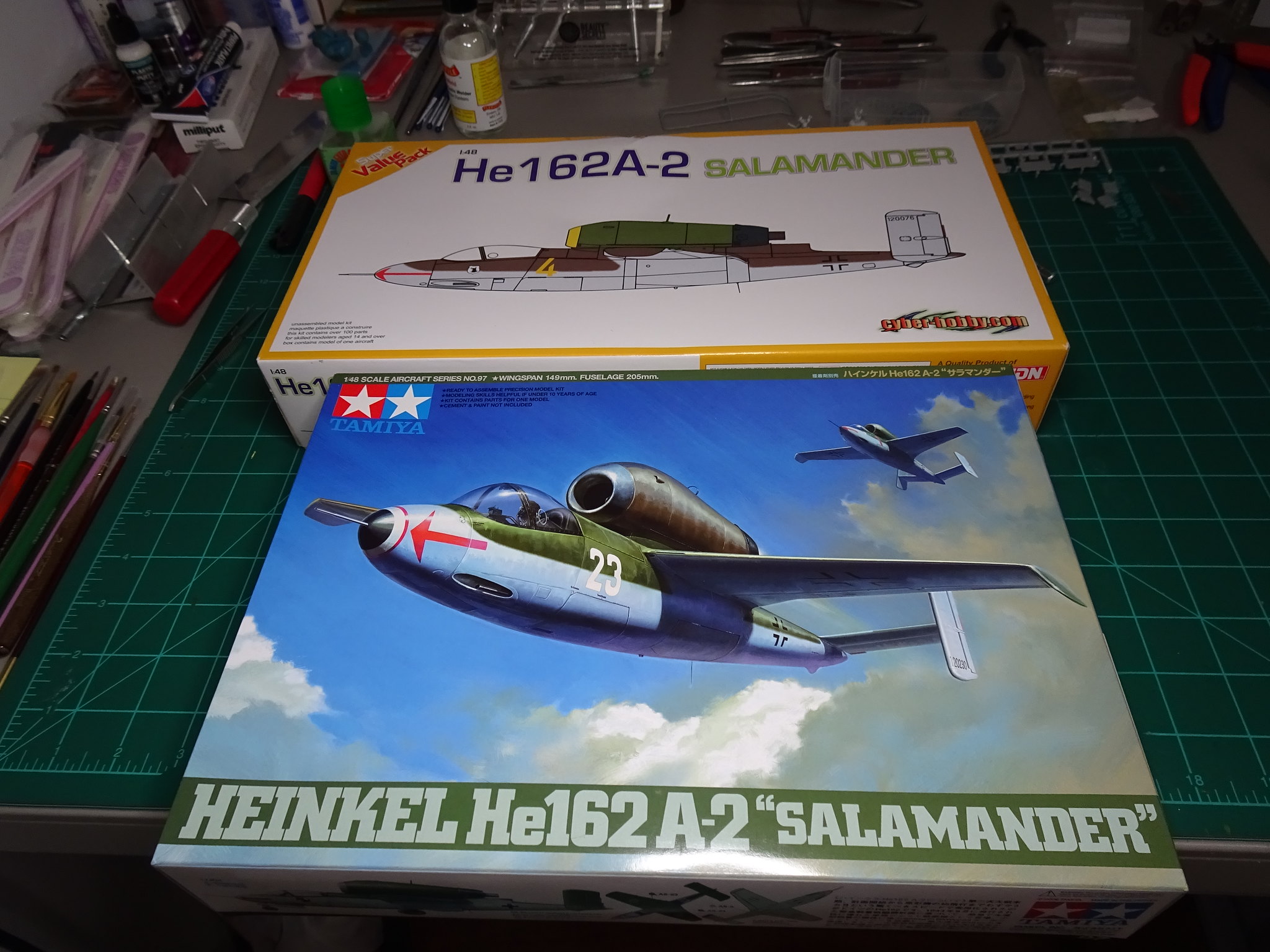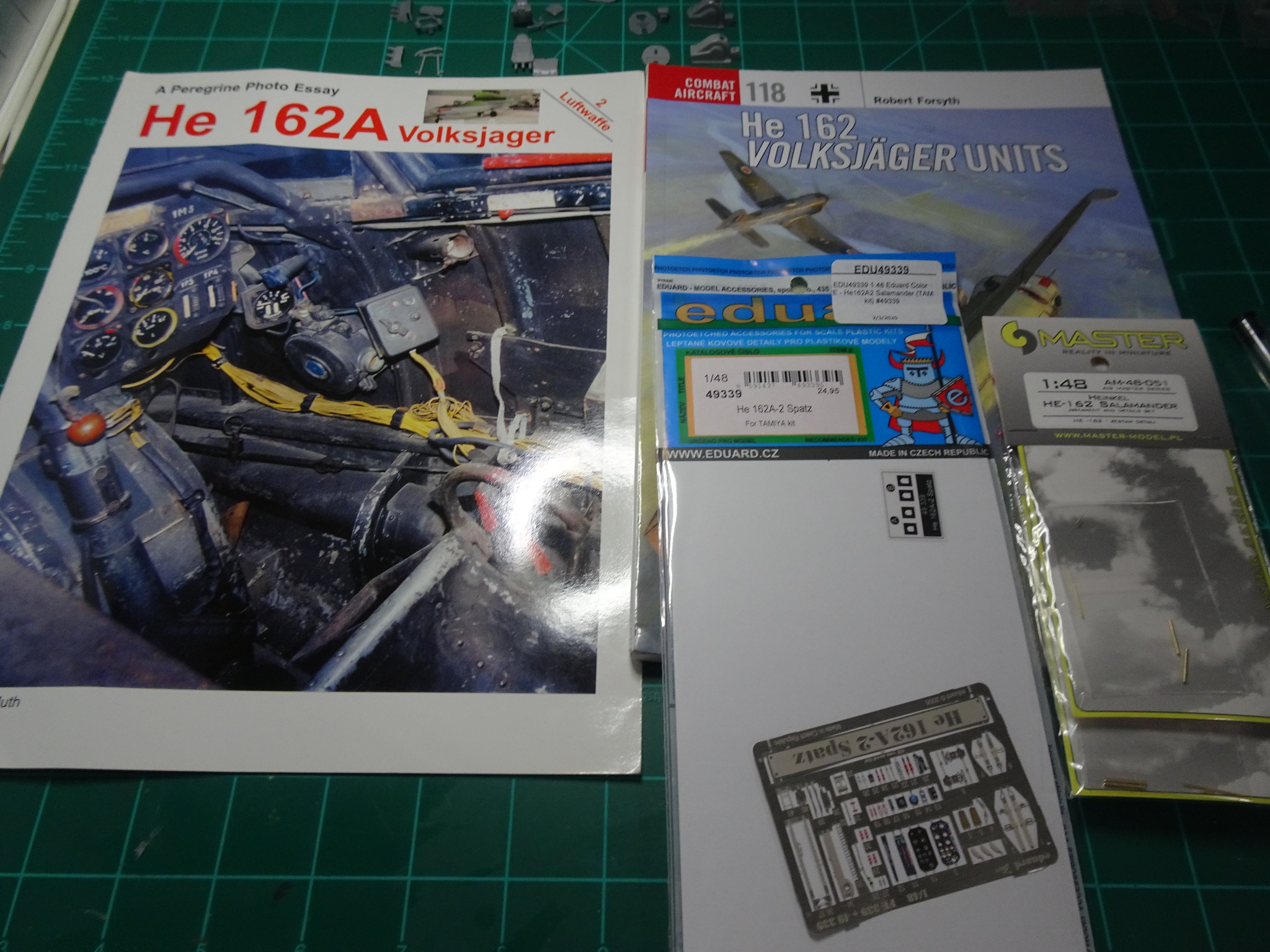The official RLM Volksjäger design competition parameters specified a single-seat fighter, powered by a single BMW 003, a slightly lower-thrust engine not in demand for either the Me 262 or the Ar 234, already in service. The main structure of the Volksjäger competing airframe designs would use cheap and unsophisticated parts made of wood and other non-strategic materials and, more importantly, could be assembled by semi- and non-skilled labor, including slave labor. Specifications included a weight of no more than 4,400 lb,with maximum speed specified as 470 mph at sea level, operational endurance at least a half hour, and the takeoff run no more than 1,640 ft. Armament was specified as either two 20 mm MG 151/20 cannons with 100 rounds each, or two 30 mm MK 108 cannons with 50 rounds each. The Volksjäger needed to be easy to fly. Some suggested even glider or student pilots should be able to fly the jet effectively in combat, and indeed had the Volksjäger gone into full production, that is precisely what would have happened. After the war, Ernst Heinkel would say, "The unrealistic notion that this plane should be a 'people's fighter,' in which the Hitler Youth, after a short training regimen with clipped-wing two-seater gliders like the DFS Stummel-Habicht, could fly for the defense of Germany, displayed the unbalanced fanaticism of those days." The clipped-wingspan DFS Habicht models had varying wingspans of both 26 ft 3 in or 19 ft 8 in, and were used to prepare more experienced Luftwaffe pilots for the dangerous Me 163B Komet rocket fighter the same sort of training approach would also be used for the Hitler Youth aviators chosen to fly the jet-powered Volksjäger design competition's winning airframe design.
The requirement was issued 10 September 1944, with basic designs to be returned within 10 days and to start large-scale production by 1 January 1945. Because the winner of the new lightweight fighter design competition would be building huge numbers of the planes, nearly every German aircraft manufacturer expressed interest in the project, such as Blohm & Voss, and Focke-Wulf, whose Focke-Wulf Volksjäger 1 design contender, likewise meant for BMW 003 turbojet power bore a resemblance to their slightly later Ta 183 Huckebein jet fighter design. However, Heinkel had already been working on a series of "paper projects" for light single-engine fighters over the last year under the designation P.1073, with most design work being completed by Professor Benz, and had gone so far as to build and test several models and conduct some wind tunnel testing.
Although some of the competing designs were technically superior (in particular to the Blohm & Voss P 211 submission), with Heinkel's head start the outcome was largely a foregone conclusion. The results of the competition were announced in October 1944, only three weeks after being announced, and to no one's surprise, the Heinkel entry was selected for production. In order to confuse Allied intelligence, the RLM chose to reuse the 8-162 airframe designation (formerly that of a Messerschmitt fast bomber) rather than the other considered designation He 500.
February saw deliveries of the He 162 to its first operational unit, I./JG 1 (1st Group of Jagdgeschwader 1 Oesau — "1st Fighter Wing"), which had previously flown the Focke-Wulf Fw 190A. I./JG 1 was transferred to Parchim, which, at the time, was also a base for the Me 262-equipped Jagdgeschwader 7, some 80 km south-southwest of the Heinkel factory's coastal airfield at "Marienehe", where the pilots could pick up their new jets and start intensive training beginning in March 1945. This was all happening simultaneously with unrelenting Allied air attacks on the transportation network, aircraft production facilities and petroleum, oil, and lubrication product-making installations of the Third Reich, these had now begun to also target the Luftwaffe's jet and rocket fighter bases as well. On 7 April, the USAAF bombed the field at Parchim with 134 B-17s, inflicting serious losses and damage to the infrastructure. Two days later, I./JG 1 moved to an airfield at nearby Ludwigslust and, less than a week later, moved again to an airfield at Leck, near the Danish border. On 8 April, II./JG 1 moved to Heinkel's aforementioned Rostock northwestern coastal suburban factory airfield and started converting from Fw 190As to He 162s. III./JG 1 was also scheduled to convert to the He 162, but the Gruppe disbanded on 24 April and its personnel were used to fill in the vacancies in other units.
The He 162 first saw combat in mid-April 1945. On 19 April, Feldwebel Günther Kirchner shot down a Royal Air Force fighter, and although the victory was credited to a flak unit, the British pilot confirmed during interrogation that he had been downed by an He 162. The Heinkel and its pilot were lost as well, shot down by an RAF Hawker Tempest while on approach to land, a point at which Allied pilots targeted German jets. Though still in training, I./JG 1 had begun to score kills in mid-April, but had also lost 13 He 162s and 10 pilots. Ten of the aircraft were operational losses, caused by flameouts and sporadic structural failures. Only two of the 13 aircraft were actually shot down. The He 162's 30-minute fuel capacity also caused problems, as at least two of JG 1's pilots were killed attempting emergency deadstick landings after exhausting their fuel.
During its exceedingly brief operational service career, the 162's cartridge-type ejector seat was employed under combat conditions by JG 1's pilots at least three times. The first recorded use was by Lt Rudolf Schmidt on April 20, with Fw. Erwin Steeb ejecting from his 162 the following day. Finally, Hptm. Paul-Heinrich Dahne attempted an ejection on April 24, but was killed when the aircraft's cockpit canopy failed to detach.
Captured He 162 120230 in France, brought to the US by Operation Lusty
In the last days of April, as the Soviet troops approached, II./JG 1 evacuated from Marienehe and on 2 May joined the I./JG 1 at Leck. On 3 May, all of JG 1's surviving He 162s were restructured into two groups, I. Einsatz ("Combat") and II. Sammel ("Collection"). All JG 1's aircraft were grounded on 5 May, when General Admiral Hans-Georg von Friedeburg signed the surrender of all German armed forces in the Netherlands, Northwest Germany and Denmark. On 6 May, when the British reached their airfields, JG 1 turned their He 162s over to the Allies, and examples were shipped to the U.S., Britain, France, and the Soviet Union for further evaluation. Erprobungskommando 162 fighters, which had been passed on to JV 44, an elite jet unit under Adolf Galland a few weeks earlier, were all destroyed by their crews to keep them from falling into Allied hands. By the time of the German unconditional surrender on 8 May 1945, 120 He 162s had been delivered; a further 200 had been completed and were awaiting collection or flight-testing; and about 600 more were in various stages of production.
The difficulties experienced by the He 162 were caused mainly by its rush into production, not by any inherent design flaws. One experienced Luftwaffe pilot who flew it called it a "first-class combat aircraft." Eric "Winkle" Brown of the Fleet Air Arm, who flew a record 486 different types of aircraft, said the He 162 had "the lightest and most effective aerodynamically balanced controls" he had experienced. Brown had been warned to treat the rudder with suspicion due to a number of in-flight failures. This warning was passed on by Brown to RAF pilot Flt Lt R A Marks, but was apparently not heeded. On 9 November 1945, during a demonstration flight from RAE Farnborough, one of the fin and rudder assemblies broke off at the start of a low-level roll causing the aircraft to crash into Oudenarde Barracks, Aldershot, killing Marks and a soldier on the ground.
Crew: 1
Length: 29 ft 8 in
Wingspan: 23 ft 7 in
Height: 8 ft 6 in
Wing area: 120.1 sq ft
Empty weight: 3,660 lb
Max takeoff weight: 6,173 lb
Fuel capacity: 184 gal
Powerplant: 1 × BMW 109-003E-1 or BMW 109-003E-2 turbojet engine
Maximum speed: 490 mph
Range: 606 miles
Service ceiling: 39,000 ft
Rate of climb: 4,610 ft/min
Guns: 2 × 20 mm MG 151/20 autocannon with 120 rpg (He 162 A-2) OR 2 × 30 mm MK 108 cannon with 50 rpg (He 162 A-0, A-1)
This is going to be a first for me building two kits at once, I know for a lot of you this is normal.
Going to be building the Tamiya kit and the Cyber Hobby kit, it is a reboxing of the old 1988 Trimaster kit who was ahead of their time.
The Tamiya kit I have got the Eduard PE set and Master Model turned brass barrels for both builds.
The Tamiya kit I'm going to go overboard with but the Cyber Hobby kit I will build mostly OOB.

For reference I have Combat Aircraft 118 He 162 Volksjager units and Peregrine photo essay He 162 this book is only 12 pages but has some really amazing color photos of the cockpit.

I'll be building both at the same time and comparing the two kits as I go.
Hope to have you all along for the ride